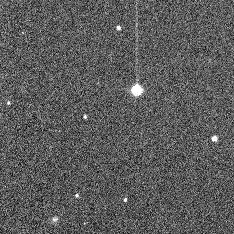
Asteroid impact avoidance
Asteroid impact avoidance comprises the methods by which near-Earth objects (NEO) on a potential collision course with Earth could be diverted away, preventing destructive impact events. An impact by a sufficiently large asteroid or other NEOs would cause, depending on its impact location, massive tsunamis or multiple firestorms, and an impact winter caused by the sunlight-blocking effect of large quantities of pulverized rock dust and other debris placed into the stratosphere. A collision 66 million years ago between the Earth and an object approximately 10 kilometres (6 miles) wide is thought to have produced the Chicxulub crater and triggered the Cretaceous–Paleogene extinction event that is understood by the scientific community to have caused the extinction of all non-avian dinosaurs.
"Planetary defense" redirects here. For defending against alien invasion in fiction, see Alien invasion.
While the chances of a major collision are low in the near term, it is a near-certainty that one will happen eventually unless defensive measures are taken. Astronomical events—such as the Shoemaker-Levy 9 impacts on Jupiter and the 2013 Chelyabinsk meteor, along with the growing number of near-Earth objects discovered and catalogued on the Sentry Risk Table—have drawn renewed attention to such threats.[1] The popularity of the 2021 movie Don't Look Up helped to raise awareness of the possibility of avoiding NEOs.[2]
In 2016, a NASA scientist warned that the Earth is unprepared for such an event.[3] In April 2018, the B612 Foundation reported "It's 100 percent certain we'll be hit by a devastating asteroid, but we're not 100 percent sure when."[4] Also in 2018, physicist Stephen Hawking, in his final book, Brief Answers to the Big Questions, considered an asteroid collision to be the biggest threat to the planet.[5][6][7] Several ways of avoiding an asteroid impact have been described.[8] Nonetheless, in March 2019, scientists reported that asteroids may be much more difficult to destroy than thought earlier.[9][10] In addition, an asteroid may reassemble itself due to gravity after being disrupted.[11] In May 2021, NASA astronomers reported that 5 to 10 years of preparation may be needed to avoid a virtual impactor based on a simulated exercise conducted by the 2021 Planetary Defense Conference.[12][13][14]
In 2022, NASA spacecraft DART impacted Dimorphos, reducing the minor-planet moon's orbital period by 32 minutes. This mission constitutes the first successful attempt at asteroid deflection.[15] In 2025, CNSA plans to launch another deflection mission to near-Earth object 2019 VL5, a 30-meter wide asteroid which will include both an impactor and observer spacecraft.[16][17]
Deflection technology concerns[edit]
Carl Sagan, in his book Pale Blue Dot, expressed concern about deflection technology, noting that any method capable of deflecting impactors away from Earth could also be abused to divert non-threatening bodies toward the planet. Considering the history of genocidal political leaders and the possibility of the bureaucratic obscuring of any such project's true goals to most of its scientific participants, he judged the Earth at greater risk from a man-made impact than a natural one. Sagan instead suggested that deflection technology be developed only in an actual emergency situation.
All low-energy delivery deflection technologies have inherent fine control and steering capability, making it possible to add just the right amount of energy to steer an asteroid originally destined for a mere close approach toward a specific Earth target.
According to former NASA astronaut Rusty Schweickart, the gravitational tractor method is controversial because, during the process of changing an asteroid's trajectory, the point on the Earth where it could most likely hit would be slowly shifted across different countries. Thus, the threat for the entire planet would be minimized at the cost of some specific states' security. In Schweickart's opinion, choosing the way the asteroid should be "dragged" would be a tough diplomatic decision.[133]
Analysis of the uncertainty involved in nuclear deflection shows that the ability to protect the planet does not imply the ability to target the planet. A nuclear explosion that changes an asteroid's velocity by 10 meters/second (plus or minus 20%) would be adequate to push it out of an Earth-impacting orbit. However, if the uncertainty of the velocity change was more than a few percent, there would be no chance of directing the asteroid to a particular target.
Additionally, there are legal concerns regarding the launch of nuclear technology into space. In 1992, the United Nations adopted a resolution that provides strict rules regarding sending nuclear technology to space, including preventing the contamination of space as well as protecting all citizens on Earth from potential fallout. [134] As of 2022, the UN is still considering the safety and legal issues of launching nuclear powered items into outer space, particularly given the expanding field of space travel as more private organizations take part in the modern space race. The UN Committee on Peaceful Uses of Outer Space recently emphasized the point of the previous resolution, saying it is the responsibility of the member states to ensure the safety of everyone regarding nuclear power in space. [135]
Sources[edit]
![]() This article incorporates public domain material from Linda Herridge. NASA, SpaceX Launch DART: First Planetary Defense Test Mission. National Aeronautics and Space Administration. Retrieved 24 August 2022.
This article incorporates public domain material from Linda Herridge. NASA, SpaceX Launch DART: First Planetary Defense Test Mission. National Aeronautics and Space Administration. Retrieved 24 August 2022.
General